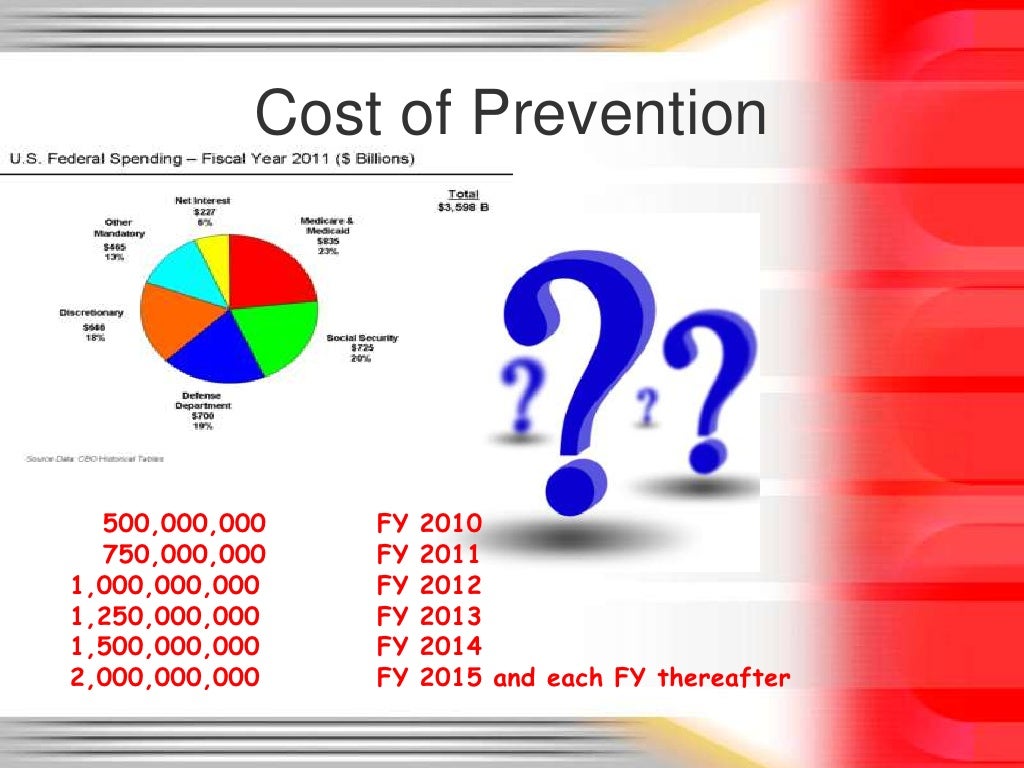
Tracking prevention costs helps identify areas for future investment to prevent nonconformities. Understanding the cost of poor quality is critical for organizations looking to improve profitability, efficiency, and customer satisfaction. Appraisal costs are expenses relate to evaluating and measuring the quality of products or services to identify defects after production or service delivery. In summary, there are several approaches that companies can take to reduce the cost of prevention. These include implementing quality control procedures, investing in research and development, utilizing predictive analytics, and strengthening internal systems.
Prevention Costs Definition Becker
Prevention costs are expenses incur to prevent defects and ensure high-quality products or services before they occur, such as training and quality planning. Time and money spent on effective prevention are clearly in quite a different category from the other costs of quality (such as appraisal costs and costs of internal and external failure). That 2022 survey by Gartner [2] underlined what Feigenbaum suspected when he claimed that hidden factories were consuming 20% to 40% of the capacity of many American companies. Preventive costs are any expenditures incurred that are intended to minimize the number of defects in products and services. The advent of new technology can significantly impact a company’s operations, leading to the need for new prevention cost strategies or changes to existing ones.
Prevention Costs: Definition, Types, Importance, and Examples
With fewer defects occurring, less time is spent reworking products to meet specifications. Smooth processes waste fewer materials and require less human effort per output. Implementing a combination of these strategies in a planned manner will significantly cut down poor quality costs and boost profits. Comparing the cost trends to process metrics like defects per unit or first pass yield provides further context into what is driving changes in quality costs.
Society- Prevention Costs
When defects or errors occur in products or services, a company may have to spend more money correcting these issues, which can be costly. Additionally, if the defects or errors result in legal consequences, a company may face fines and legal fees, which can be a significant financial burden. When a company produces high-quality products and services, it can contribute to the well-being and safety of the community. For instance, investing in prevention costs in the healthcare industry can improve patient outcomes and reduce healthcare costs, positively impacting society’s overall health.

Tracking COPQ highlights areas for improvement in processes and systems to reduce overall costs. If you’re spending more time and money on correcting poor quality than on preventing it, you’re not (yet) in control of your processes. Applying our conservative estimate of 76% to the average total cost of quality (5.1% step variable cost definition of revenue), we can conclude that the average hidden factory may well be consuming 3.4% of total revenue. Quantifying and analyzing the cost of poor quality provides visibility that drives strategic quality initiatives. Training employees on quality awareness and building a culture of quality is essential.
What is the difference between prevention costs and appraisal costs?
This can lead to increased customer satisfaction and loyalty, which can help to drive sales and revenue. Tracking costs in each of these categories provides critical insights for quality improvement initiatives. This requires increasing prevention costs and reducing failure costs over time. In the realm of quality management, businesses often deal with various costs related to maintaining and improving product or service quality. Understanding the difference between these two types of costs is crucial for effective quality management and overall organizational efficiency.
By investing in quality control measures, businesses can differentiate themselves from their competitors and establish a reputation for quality. This can attract new customers and retain existing ones, driving sales and revenue. Significant reductions in the cost of poor quality and increases in prevention costs signal the maturity of the quality system. Appraisal costs help verify quality requirements before products reach customers. However, analyzing appraisal costs can identify opportunities to streamline quality control activities.
The investment in prevention costs helped the company save time and money by preventing potential issues from occurring and reducing the need for costly corrective actions. Quality control assessments, such as customer satisfaction surveys or product inspections, help gather information on the company’s quality standards for products and services. By understanding customer needs and expectations, businesses can adjust their operations to meet those needs and prevent potential issues from occurring. By investing in quality control measures, businesses can ensure that their products and services meet or exceed customer expectations.
- Monitoring progress can help identify potential challenges and facilitate adjustments.
- In the rest of this chapter, you’ll learn how to use this difference to begin building a case for the critical investments in prevention your company needs.
- Appraisal costs help verify quality requirements before products reach customers.
- This will help them improve their business processes and operations, which ultimately lead to better profitability.
This gives companies the coveted ability to effectively control the customer experience, a game-changing intangible that sets companies apart from competitors. PCA can help increase productivity by helping businesses focus their resources on the most effective preventative measures. The more effectively a business focuses its efforts, the more productive it becomes. By taking steps to anticipate problems and create solutions, businesses can avoid issues that reduce efficiency and profitability. Appraisal costs are expenses related to measuring and monitoring activities to ensure quality standards are met, including inspection and testing of products.
While the top-level management frames the quality standards, the operational-level staff takes charge of following these standards, policies, and protocols. The quality control department is primarily responsible and accountable for implementing the prevention cost, along with other cost of quality (COQ) measures. Furthermore, the engineering department ensures that the product design aligns with the desired quality requirements of usage convenience, reliability, sturdiness, and efficiency. Prevention costs play a crucial role in ensuring product or service quality, customer satisfaction, and overall business success. By investing in proactive measures to prevent defects or errors, companies can minimize quality issues, reduce costs, and maintain a competitive edge in the market. To implement prevention costs effectively, businesses need to identify and address the common challenges they may face and follow best practices to help them achieve their objectives.
The company sources high-quality materials from reputable suppliers to ensure the bicycle’s components meet their standards. They also regularly check incoming supplies to ensure they meet the company’s quality requirements. This includes quality planning, control of documents and records, handling non-conformances, audits, corrective actions, and continual improvement. Implementing process improvement methodologies like Six Sigma and Lean helps reduce variations and defects. Prevention is generally more cost-effective in the long run as it reduces the need for appraisal and corrective actions by addressing issues upfront. Specifically, by the fact that you, and Quality Managers like you, struggle to get the investments you need to ensure the success of the actual factory.
